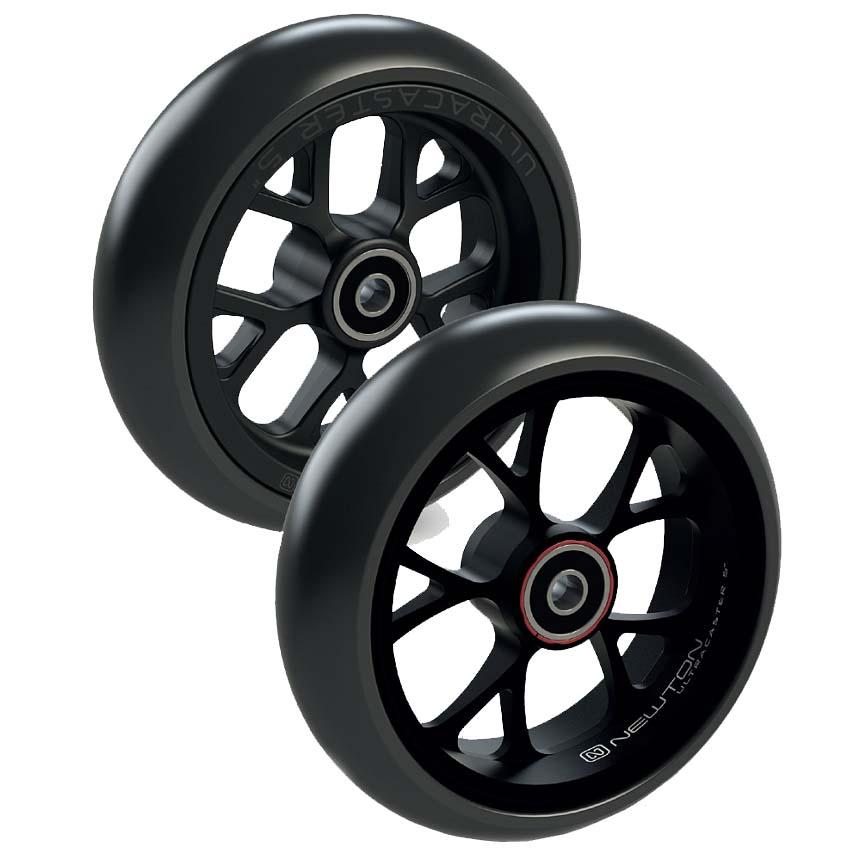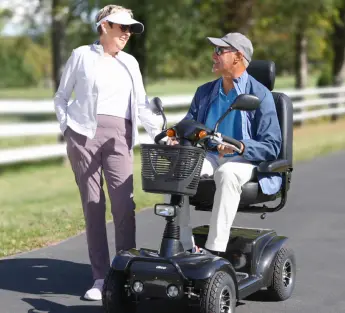Newton Ultracaster (Each)
Reduce rolling resistance for great comfort and mobility.






Newton Ultracaster (Each)
The SpinLife Difference Includes:
110% Price Guarantee
Lifetime Limited Warranty
Features
- 10% lighter for enhanced mobility
- 11% more rebound for improved comfort
- 16% more tear resistant
Overview
16% more tear resistant than the leading brand and 10% lighter, Newton Ultracaster wheels give you a more efficient way to move around! Built to minimize rolling resistance, and increase speed, comfort and mobility. The composite ultracaster is 9 times more durable than the leading brand. Aluminum has a higher efficiency and requires less maintenance. Available in three sizes: 4”, 5”, 6” and in composite or aluminum.
The Newton Story:
Newton high-performance wheelchair components are born from Newton's impatience with the status quo. Every Newton component represents a total rethink of what's possible. High-end performance and design with innovative technology and materials and head turning aesthetics. A single glance tells you it's a Newton component. A single test drive confirms it. Upgrade your ride; get Newton.
More Information on the Newton Ultracaster (Each)
See also:
Return Policy
- The following conditions apply:
- This item has a 20% Restocking Fee.
- You are responsible for the cost of return shipping. The product must new and unused and in the original packaging.
- All accessories and items that were included in the box must be returned.
- Items canceled after the product has already shipped will be considered a return.
- Delivery and service fees are not refundable.
- Mattresses ordered with beds are non-returnable.
- Custom-made by the manufacturer to suit your specific needs are non-returnable.
- An RA (Return Authorization) from SpinLife must be requested within 30 days of delivery.
- The item must be shipped back to the address noted on the RA within 15 days.
- Once approved, your refund, minus any restocking and freight fees, will be issued to your original form of payment.
- If delivered by a technician and delivery slip is signed and accepted the item is unable to be returned.
If you have questions about this item please call a SpinLife Expert at 1-800-850-0335.
Warranty Information
Motion Composites warrants the carbon wheelchair frame and cross braces against defects in materials and workmanship under a lifetime limited warranty.
Components: One year
Motion Composites warrants all Motion Composites-made components against defects in materials and workmanship for one (1) year from the date of purchase, except for the parts listed below.
Limitations and Exclusions:
Motion Composites covers the following items for 30 days:
Tires and tubes from front or rear wheels, upholstery (including cushions, seat slings, armrest upholstery) and push-handle grips.
This warranty does not cover damages arising from normal wear and tear or from other circumstances beyond Motion Composites’ control; or the foregoing warranty shall not apply if: the original Motion Composites serial number tag has been removed, altered or defaced; or the wheelchair has been subjected to negligence, accident, improper maintenance, storage or operation as required by your Motion Composites Owners Manual, commercial institutional use, misuse or abuse, including, but not limited to, exceeding the maximum weight capacity of 250 pounds or 350 pounds if equipped with HD Kit, the wheelchair has been damaged by improper repairs or the repairs made to any component without the express written consent of Motion Composites or the Wheelchair has been modified without Motion Composites’ express written consent, including, but not limited to, modification through the use of unauthorized parts or attachments or the wheelchair has been used as a weight training apparatus or the wheelchair’s Transit Tie-Down System (TTDS) has been misused; if TTDS is not attached to the four tarpaulin bows identified and installed by Motion Composites.
*This warranty is extended only to the original consumer purchasers of Motion Composites’ product
More Information on the Newton Ultracaster (Each)
See also:





 Contact Us
Contact Us
 M-F 9am - 5pm ET
M-F 9am - 5pm ET
 Request parts
Request parts Request Service
Request Service
